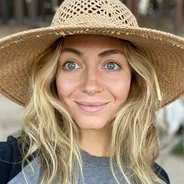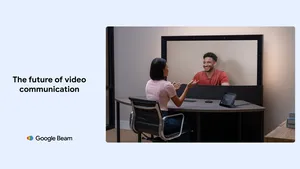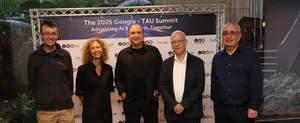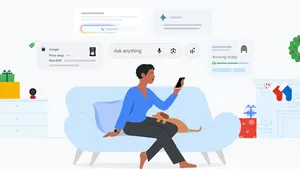Sleeping on the job: How we built the new Nest Hub
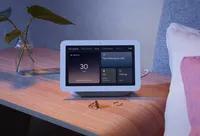
When Dr. Logan Schneider was in medical school, he didn’t get much sleep. “Residency training is a horribly draining experience where you get something like...four hours of sleep a night,” he says. It was during this time he realized how little we really know about sleep.
“I started prioritizing my own sleep, and also my wife’s and my kids’ — they’re sleeping champs!” he says. (In fact, his friends with newborns often turn to him when their babies won't sleep through the night.) Originally focusing on neurology in medical school, Logan soon became so fascinated by what he was learning about sleep that he decided to study it specifically.
Dr. Schneider is part of the Google Health team that coupled sensor research with sleep science to power contactless sleep sensing in the new Nest Hub, available beginning today. Sleep Sensing, powered by Soli technology, uses a tiny, low-energy radar system to sense motion at the micrometer level. Small motions ranging from breathing to movements are detected, while identifying features like faces aren’t, to give people information about their sleep duration, routines and quality. From this data, the Nest Hub can offer personalized suggestions like waking up at a consistent time, or exercising earlier in the day.
“When we started thinking about the second-generation Nest Hub, we noticed that nearly a quarter of people currently using Nest Hubs put their devices in their bedrooms,” says product manager Ashton Udall. “So we started to look into how we could bring more value to that part of the home.” When the Nest team surveyed users about what else they could do to make the device better for bedrooms, the top request, hands down, was for assistance with their sleep. Combined with trends showing people are getting less sleep and worse sleep, there was an obvious opportunity to help.
“It’s so exciting to be in this field right now because there are so many things we’re discovering about sleep,” says Dr. Raman Malhotra from the American Academy of Sleep Medicine, who advised the Nest team throughout the development process. What the medical field is learning about sleep isn’t the only exciting thing, though. Dr. Malhotra also says it’s the fact that technology companies are increasingly interested in democratizing sleep research and helping more and more people understand their sleep.
For both doctors and patients, sleep is a “black box,” as both Dr. Malhotra and Dr. Schneider explain it; if you go to a doctor and say you’re not sleeping well, it’s not as if you can give much more information than that. You know how you feel the next day, but not necessarily why. “Traditionally, we’d bring someone into a sleep lab to measure their sleep with something called a polysomnogram which is the gold standard for certain sleep disorders — but the polysomnogram has limitations, too,” says Dr. Malhotra. “Most patients don’t want to leave their house for a night and go to an unfamiliar environment. Then, of course, we’re changing what their sleep looks like — who’s going to sleep normally with wires attached to them?” And even after all that, he says, it’s difficult to learn much from just one night.
“That’s what’s so exciting about new sleep technologies,” Dr. Malhotra explains. “We can learn about how someone’s sleeping in their normal environment over a whole bunch of nights, not just one.” Plus, he says, something like the Nest Hub is accessible to far more people than a polysomnogram.
A look inside Forty Winks, Google Health’s sleep lab.

Before the new Nest Hub could make its way into homes, the team had to get the technology ready for the real world — so into Google Health’s “sleep lab,” Forty Winks, they went. The team used the lab space to simulate various sleep environments. “There are different types of bed mattresses and frames, different types of fans, even adjustable bedside tables,” Dr. Schneider explains. “We had to create this space that we could modularly change so we could recreate as many kinds of sleeping experiences as possible. Co-sleepers, pets, different bedroom setups — all of it.”
“The number of combinations and permutations we tested in Forty Winks...it’s unfathomable,” Dr. Schneider says. “It was incredibly complex.” For example, data was collected by the team recreating common scenarios such as reading a book or using your phone while sitting in bed, to differentiate these cases from sleep. The team also used “Chester,” a mechanical “breathing” dummy to mimic human respiration to test the Soli-based algorithms.
Chester, Forty Winks’s resident sleep dummy.

Given that development took place during the COVID-19 pandemic, Google Health product manager Reena Lee was initially concerned about how they would develop sleep sensing for a new hardware product while working remotely. But there was actually a silver lining in the unexpected work-from-home environment. “Googlers who were testing a beta unit at home could give real-time feedback quickly, share setup pictures, or even report issues after afternoon naps!" Reena says.
The team tested the system over hundreds of thousands of nights with thousands of people using it at home in their bedrooms. The device was also tested in a sleep clinic against polysomography, the "gold standard" Dr. Malhotra referenced, demonstrating comparable accuracy to published results for other clinical- and consumer-grade devices.
While the larger mystery of sleep likely won’t be unearthed any time soon, the team is hopeful that advancements like Sleep Sensing on the Nest Hub will help more people understand — and more importantly, prioritize — their sleep. Because, as Dr. Malhotra simply puts it, “There really is no way to replace a good night’s sleep.”
